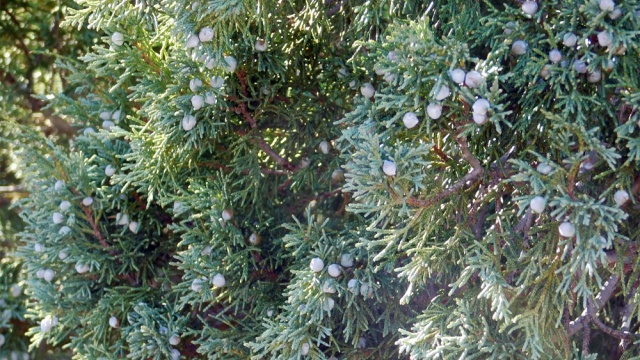Local ecosystems can vary over even small distances, so while both Red Cedar and nearby Reservoir Ridge share similar altitude, dry rocky soil, and common high plains shrubs like Rhus trilobata, Reservoir Ridge — just across Satanka Cove from us — has something in short supply on this hill: Rocky Mountain Juniper (Juniperus scopulorum). It’s one of four juniper species listed in the Ack, (Jennifer Ackerfield’s Flora of Colorado, which when published three years ago immediately became the essential reference for the state’s plants). Only a couple junipers are commonly found in the county; the genus prefers the western part of the state.

Juniperus scopulorum also tends to like narrow hilltops in full sun. There’s a nice little grove of it in a community of ponderosa and piñon pine (Pinus edulis) overlooking Pleasant Valley at the northern end of the natural area. The fine sandstone topsoil of that part of the hogback may be a more hospitable host, but I’m ordering a few plants from a nursery in Washington to see how it does here, among the mountain mahogany and rabbitbrush. The Washington nursery specializes in plants for habitat restoration. It’s easy to find Rocky Mountain Juniper in Northern Colorado, but much of it seems to be grown for suburban gardens, for screens and windbreaks, and they’re often columnar varieties, like the cypress you’d find in Italian gardens. The wild kind, as you would expect, is more broadly rounded, with sometimes angular sprays of foliage.
In herbalism, junipers, including this species, are used as aromatics and for urinary tract issues — but more interestingly in several cultures to clear negative influences or bad vibes (which I’m pretty sure would happen anyway if you improved someone’s ability to pee). It’s popular nowadays as an essential oil for diffusers or in incense. And it does have a bracing quality — that invigoration you feel in a high country pine forest, or on a smaller scale, from Artemisia frigida, the prairie sagewort of the plains and mountain shrublands.

Among many Native American peoples, the tree is both practical and sacred. The northern Cheyenne used the leaf of Juniperus scopulorum in ceremony to dispel fear of thunder, the Hopi rubbed the ash of the one-seed juniper on newborns, and it was sometimes carried in clothing for protection. I’m also hoping, as I watch patio furniture fly past the window in a sudden violent rainstorm tonight, that its protective benefits extend to wind. If that’s the case, apart for its many other virtues, it’ll be a welcome addition up here.
